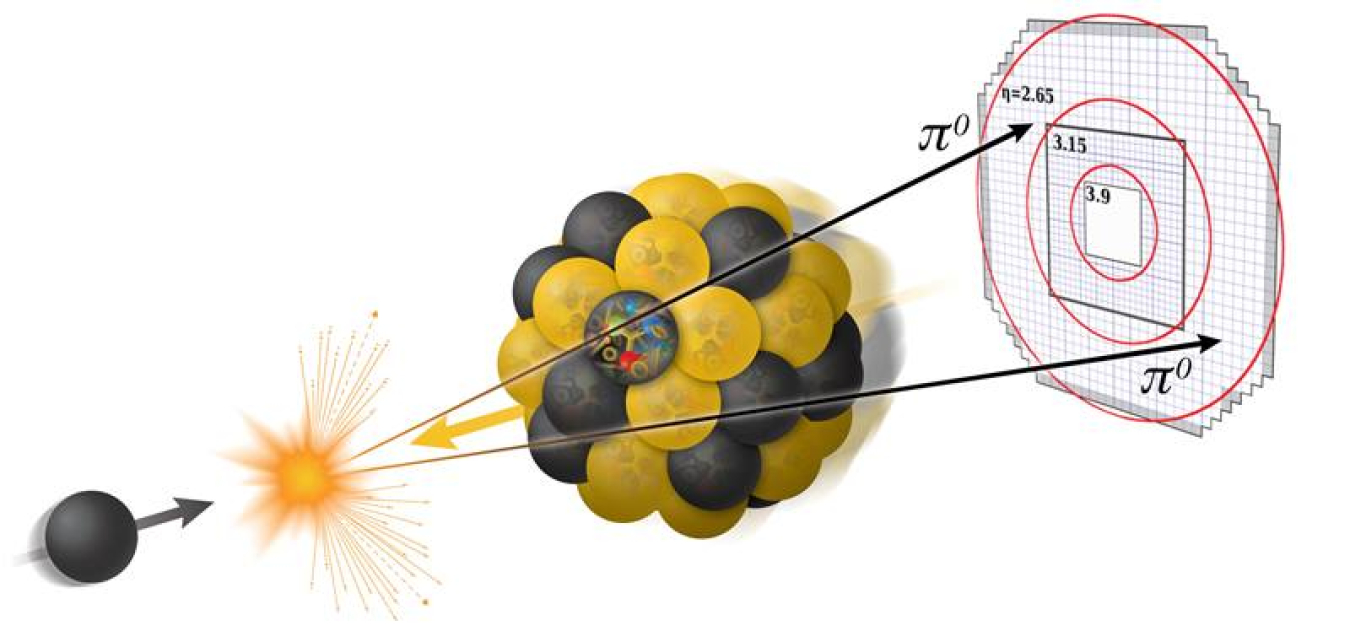
The Science
Nuclear physicists collide protons with heavier ions (atomic nuclei) to explore the fundamental constituents that make up those ions. By tracking particles that stream out of the collisions, they can zoom in beyond the ions’ protons and neutrons to study those particles’ innermost building blocks—quarks and gluons. Recent results revealed a suppression of certain back-to-back pairs of particles that emerge from interactions of single quarks from the proton with single gluons in the heavier ion. The suppression was greatest in collisions with the heaviest nuclei. The results suggest that gluons in heavy nuclei recombine, as predicted by the theory of the strong force, quantum chromodynamics.
The Impact
Previous experiments have shown that when ions are accelerated to high energies, gluons split to multiply to very high numbers. But scientists suspect that gluon multiplication can’t go on forever. Instead, in nuclei moving close to the speed of light, where relativistic motion flattens the nuclei into speeding gluon “pancakes,” overlapping gluons should start to recombine. Seeing evidence of recombination would be a step toward proving that gluons reach a postulated steady state called saturation, where gluon splitting and recombination balance out. The new results match with theoretical models postulating this saturated state.
Summary
To search for signs of gluon recombination, scientists with the STAR Collaboration used the STAR detector at the Relativistic Heavy Ion Collider, a Department of Energy Office of Science user facility. They were looking for a telltale signal produced in collisions of protons with a range of ions when a single quark from the proton interacts with an individual gluon in the ion. That signal is a pair of neutral pions striking a forward detector at back-to-back angles. If gluons in the nuclei recombine, scientists would expect to see a suppression in this back-to-back signal because fewer gluons would be available for the quark-gluon interactions. They looked for the signal in collisions of protons with different sized ions.
Theorists had predicted that gluon recombination would be more prominent the larger the ion. That’s because heavy ions (nuclei) have more quark-and-gluon-containing protons and neutrons. When accelerated to near the speed of light, these ions flatten out, making the abundant gluons overlap and more likely to merge. Bigger nuclei with more gluons, should mean more merging and more suppression in the signal. That’s exactly what the scientists found. The results provide evidence that gluons recombine—and a strong suggestion that gluon splitting and recombination could produce the predicted saturated state.
Contact
Xiaoxuan Chu
Brookhaven National Laboratory
[email protected]
Elke Aschenauer
Brookhaven National Laboratory
[email protected]
Funding
This research was funded by the Department of Energy Office of Science, Nuclear Physics program, the National Science Foundation, and a range of international agencies listed in the published paper.
Publications
Abdallah, M.S., et al. (STAR Collaboration), Evidence for Nonlinear Gluon Effects in QCD and Their Mass Number Dependence at STAR. Physical Review Letters 129, 092501 (2022). [DOI: 10.1103/PhysRevLett.129.092501]
Related Links
Signs of Saturation Emerge from Particle Collisions at RHIC, Brookhaven Lab news release

